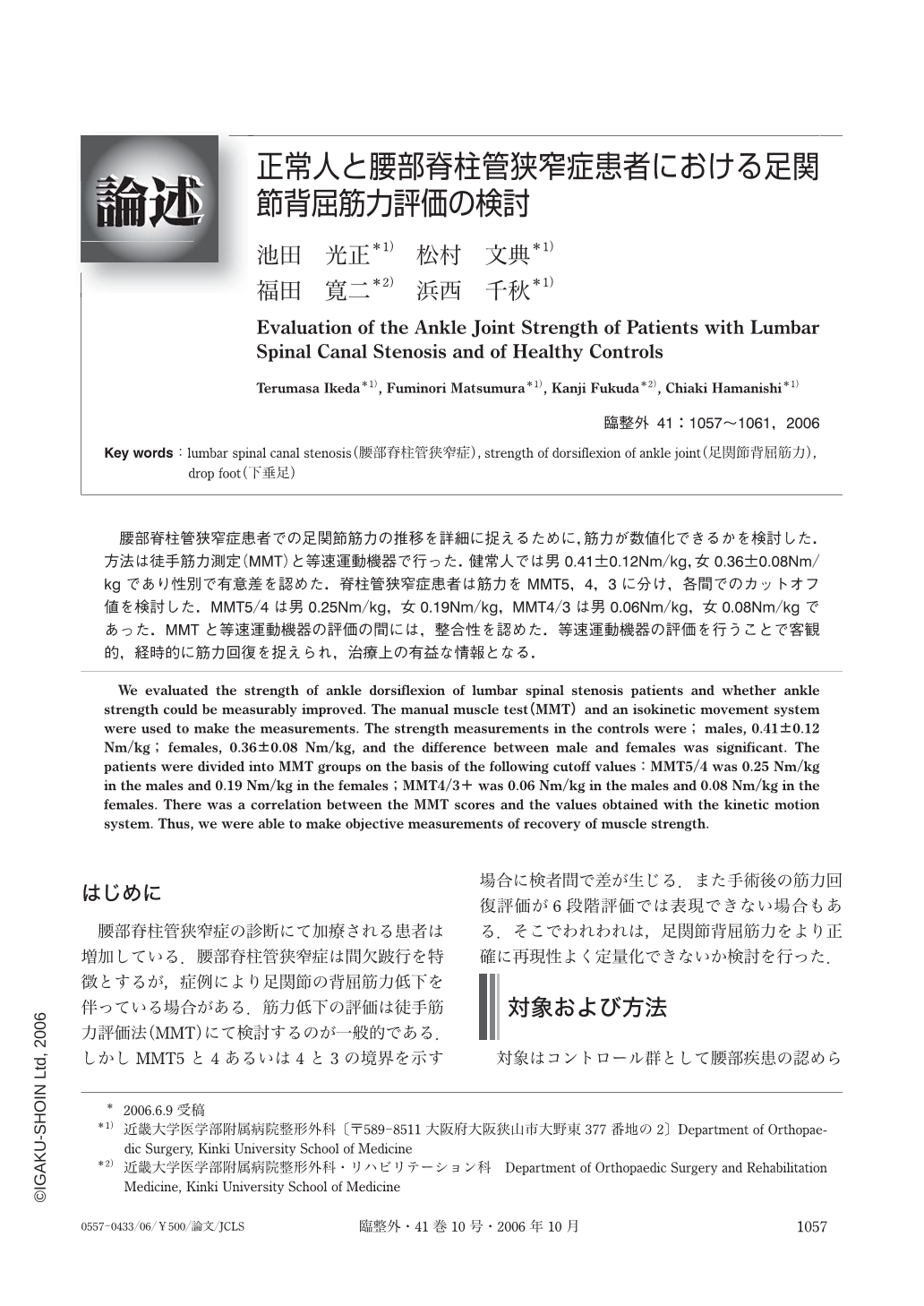Japanese
English
- 有料閲覧
- Abstract 文献概要
- 1ページ目 Look Inside
- 参考文献 Reference
腰部脊柱管狭窄症患者での足関節筋力の推移を詳細に捉えるために,筋力が数値化できるかを検討した.方法は徒手筋力測定(MMT)と等速運動機器で行った.健常人では男0.41±0.12Nm/kg,女0.36±0.08Nm/kgであり性別で有意差を認めた.脊柱管狭窄症患者は筋力をMMT5,4,3に分け,各間でのカットオフ値を検討した.MMT5/4は男0.25Nm/kg,女0.19Nm/kg,MMT4/3は男0.06Nm/kg,女0.08Nm/kgであった.MMTと等速運動機器の評価の間には,整合性を認めた.等速運動機器の評価を行うことで客観的,経時的に筋力回復を捉えられ,治療上の有益な情報となる.
We evaluated the strength of ankle dorsiflexion of lumbar spinal stenosis patients and whether ankle strength could be measurably improved. The manual muscle test (MMT) and an isokinetic movement system were used to make the measurements. The strength measurements in the controls were; males, 0.41±0.12 Nm/kg; females, 0.36±0.08 Nm/kg, and the difference between male and females was significant. The patients were divided into MMT groups on the basis of the following cutoff values:MMT5/4 was 0.25 Nm/kg in the males and 0.19 Nm/kg in the females;MMT4/3+ was 0.06 Nm/kg in the males and 0.08 Nm/kg in the females. There was a correlation between the MMT scores and the values obtained with the kinetic motion system. Thus, we were able to make objective measurements of recovery of muscle strength.

Copyright © 2006, Igaku-Shoin Ltd. All rights reserved.


